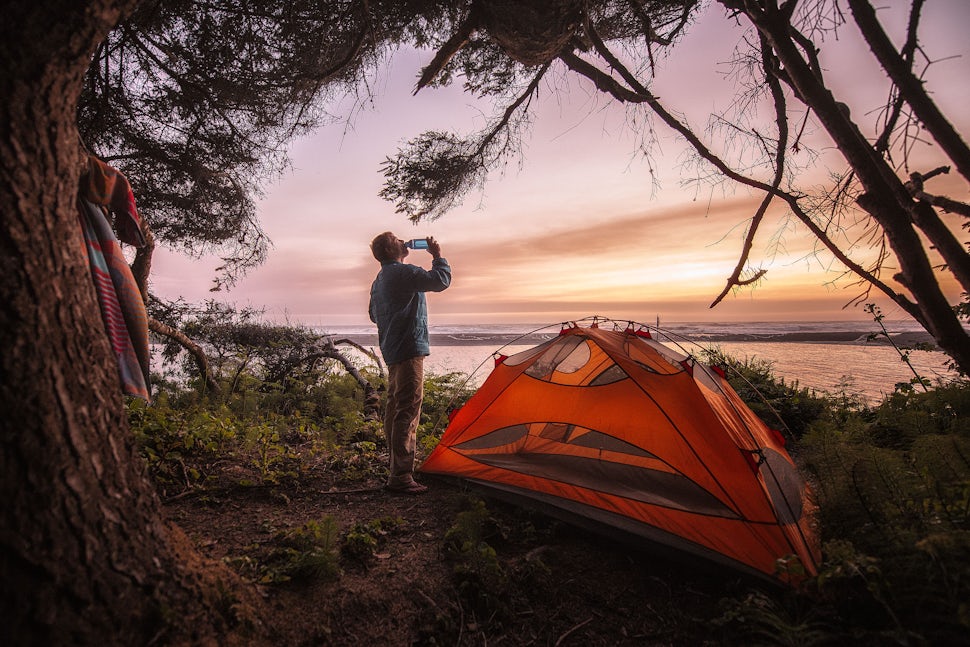Should You Drink Untreated Water When Your Life Depends On It?
To drink or not to drink, that is the question.

Come along with me, for an adventure gone terribly wrong. You are in a wilderness survival situation and signs of extreme dehydration have begun to set in. Without the appropriate filtration or disinfection, should you drink whatever water you can get your hands on? This is life or death...cheers! Right?

Drinking untreated water in the great outdoors is a complex discussion. It is a topic that has professionals and enthusiasts passionately perched on both sides. The abundant and contrasting information can become overwhelming. Hell, it had me circumambulating around my hypothetical, untreated water source for weeks, while trying to make the right decision. Dehydration effects psychological, as well as physical performance. Should you find yourself in this unfortunate event, you most likely will not be in your most rational state of mind and time will not be on your side. I called on a handful of trusted professionals to find out what they would do. In an emergency, we are juggling a paradoxical situation. Our main concern is whether the potential benefits (life and comfort) outweigh the potential harm (infection).
Bacteria, viruses, amoebas, algae, and parasites can make you sick with a variety of symptoms, including debilitating diarrhea and vomiting. If you are already dehydrated this would only exacerbate the situation. So if the initial effects of your bittersweet sip of contaminated life, cripple you further, what is the point? The point is this. Any pathogens you are at risk of drinking will take days, and in some cases, weeks, before causing symptoms. The hope is, that you can make your way to safety before these symptoms have you doubling over in pain. Peter Kummerfeldt, author of Surviving a Wilderness Emergency and founder of outdoorsafe.com, writes, “Doctors can cure giardiasis and cryptosporidiosis, but they can’t cure dead!” Dr. Paul Auerbach, author of Medicine for the Outdoors, agrees with Kummerfeldt and further states, “Always carry water disinfection supplies. But if you don’t have them and you need to take a chance on natural freshwater, it’s better than dying from dehydration.”
Knowing how to judge your degree of risk and being able to fall back on practiced survival skills, are essential to your survival. Brett Stoffel, VP of Emergency Response International shared, “Statistically, survivors rarely rise to the occasion or invent something completely new in an emergency, rather they usually fall back to their training.”
That said, It is vital to know when you should begin considering drinking untreated water. How long humans can go without water is entirely dependent on circumstances. In general you have 3-7 days. However, it really boils down to water balance, which is an equation of your physical health and level of exertion, mixed with the state of the environment. Best to know is how to recognize signs of extreme dehydration. Signs include dizziness, confusion, weakness, extreme thirst, lack of urination, and shriveled skin that doesn't bounce back after being pinched (commonly noticed on the back of the hands).

Whether you’ve come across a stream, lake or muddy pond, (just never salt water), I recommend treating it with the reverence you would a 30 year old, single malt scotch, and drink up! If your life is on the line, your choices are most likely not going to be abundant, but do consider the following: There is evidence that UV radiation kills off many microbes, sitting in still water (predominantly at the surface), but there are surface contaminants such as bugs and algae you want still want to avoid. Therefore, Brett Stoffel instructs, “it is ideal to gather your water 4 to 6 inches under the surface, but up from the sediment near the bottom where microbes are higher in abundance.” After gathering, use your cleanest article of clothing to filter the water through multiple times, then let it sit in your container for 20-30 minutes to allow contaminants to further settle near the bottom. If you do come across a source of water and feel you haven't reached extreme dehydration, I would suggest gathering the water to pack with you, until a better source surfaces or you just can’t continue without it. If you are fortunate enough to have the means to do so, bringing your water to a boil will disinfect it.
Be safe out there friends. Familiarize yourself with the area you are heading into and know the water sources. Read books written by experts and take a wilderness survival course. Always, always carry a filter and tablets as a backup. Cheers!
Cover photo: Austin Trigg
Don't see your favorite adventure on The Outbound? Show us by creating an adventure.
Please respect the places you find on The Outbound.
Always practice Leave No Trace ethics on your adventures. Be aware of local regulations and don't damage these amazing places for the sake of a photograph. Learn More
We want to acknowledge and thank the past, present, and future generations of all Native Nations and Indigenous Peoples whose ancestral lands we travel, explore, and play on. Always practice Leave No Trace ethics on your adventures and follow local regulations. Please explore responsibly!
Do you love the outdoors?
Yep, us too. That's why we send you the best local adventures, stories, and expert advice, right to your inbox.









